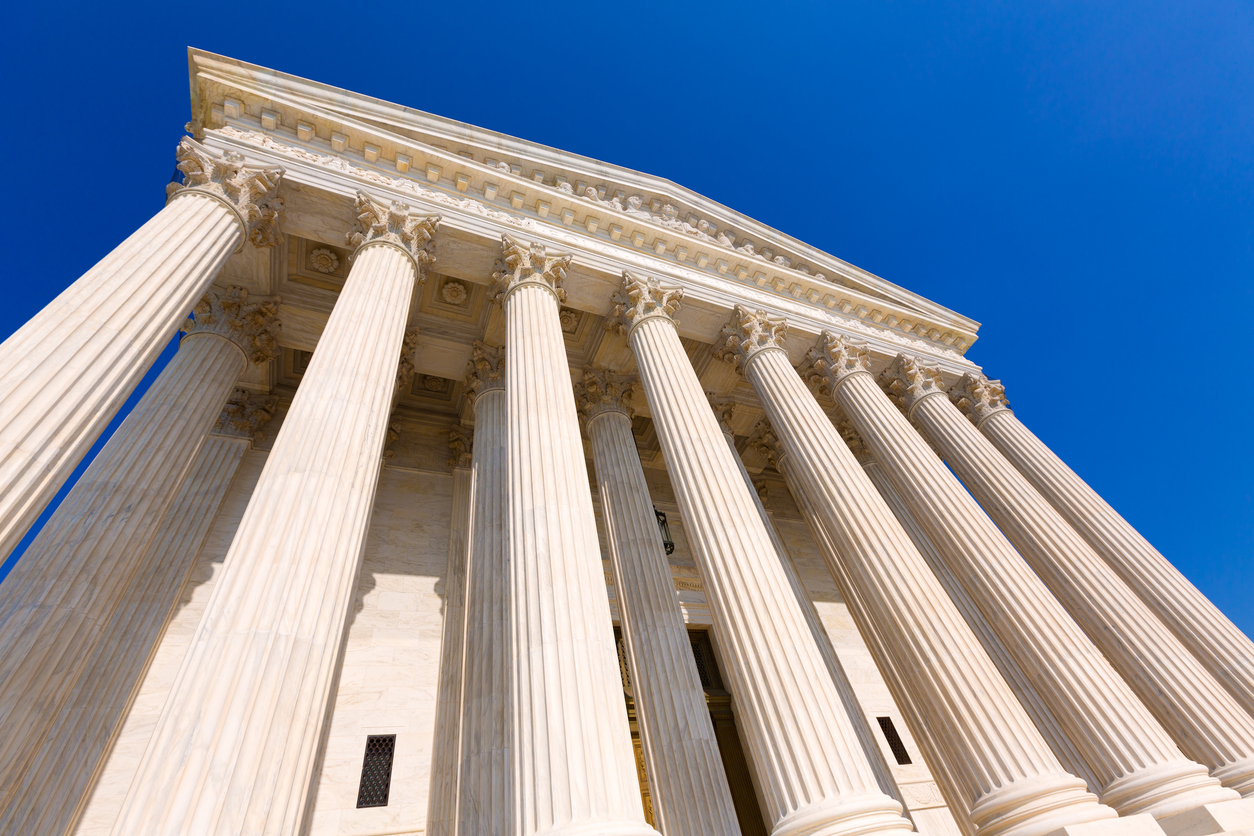Heeding FDR’s Cautionary Tale? Biden Says “No” to Adding Supreme Court Justices
The Supreme Court has been in the news — more so than usual. It made a polarizing decision on former President Trump’s immunity from criminal prosecution and overruled Chevron. Justices have been in the storm’s center over vacations and flags. Recent events have led President Biden, now that he has decided against seeking re-election, to focus on the Supreme Court for the rest of his term. On Monday, he proposed several changes, including 18-year term limits and a code of ethics for the justices.
One notable omission: adding Supreme Court seats. That was disappointing to those who see this change as a needed check on the Court. Others were relieved the President did not make this proposal, as they see this step as improper “court packing.”
Politics aside, is adding justices even allowed? The answer is yes.
A nine-justice Court is not set by the Constitution. Article III, Section 1 says only that “[t]he judicial Power of the United States, shall be vested in one supreme Court, and in such inferior Courts as the Congress may from time to time ordain and establish.” It then states that jurists “shall hold their Offices during good Behaviour” and be paid a non-diminishing salary for their work. But our charter says nothing about the number of justices on the high court.
That leaves the issue to Congress. Adding and subtracting judicial seats is a legislative power. It is a check the legislative branch has on the judicial branch in our system of separated powers. Congress “commands the purse,” as Alexander Hamilton put it in Federalist 78, and thus it pays every judge’s salary. Since the legislature pays the bill, it gets to decide how many judges we have.
Congress has repeatedly tinkered with the number of justices. In the Judiciary Act of 1789, it first specified “a chief justice and five associate justices, any four of whom shall be a quorum.” Six justices matched the number of seats assigned to the justices on the three regional circuit courts, which sat as trial courts. They were made up of three-judge panels: two Supreme Court justices and one local district judge. This meant long and exhausting “circuit riding” in carriages on dirt roads that did not finally end until 1911.
Congress changed the Supreme Court’s complement when President John Adams signed the Judiciary Act of 1801 just before leaving office. It cut the Court from six to five at its next vacancy, reorganized the circuit courts, and added plenty of new judicial seats — which Adams immediately tried to fill. Many saw this as court packing by Adams and the outgoing Federalist majority in Congress. This “midnight judges” episode led the next Congress, now with a Democratic-Republican majority, and new President Thomas Jefferson to implement the Judiciary Act of 1802. It reverted to six justices to match the new set of six circuit courts that new law specified.
As the 19th century unfolded, Congress added circuits and justices to track the nation’s westward expansion. It added a seventh justice by the Seventh Circuit Act of 1807, eighth and ninth justices by the Eighth and Ninth Circuits Act of 1837, and a tenth justice by the Tenth Circuit Act of 1863.
After the Civil War, Congress went in the other direction. It wanted to prevent President Andrew Johnson from appointing any Southerners to the Court. And Chief Justice Salmon Chase, working behind the scenes, was negotiating for a raise in the justices’ pay and suggested a reduction in the Court’s size as a trade-off. These factors led to the Judicial Circuits Act of 1866, which cut the court’s size from 10 to seven as vacancies occurred.
This change proved short-lived. A few years later, Congress passed the Judiciary Act of 1869. It specified a nine-justice Court to match the nine judicial circuits laid out in the 1866 law. Congress has not changed the number of justices since the 1869 Act.
To sum up: Congress has added and subtracted Supreme Court justices many times. It has passed laws specifying five, six, seven, nine and 10 justices. The legislature’s changes have been for an array of reasons. Some were political and unrelated to the needs of the judicial system or the American public.
So why do so many think a nine-justice Supreme Court is carved in stone? And why did President Biden shy away from proposing a change in the Court’s size?
The answers here probably have something to do with the lack of any change for 150 years. Nobody alive has known anything but a nine-justice Court. But surely President Biden’s reluctance also has something to do with President Franklin Roosevelt’s 1937 Court-expansion gambit. Riding the high of a landslide re-election, FDR announced a bold plan to grow the Court to up to 15 justices. This was widely seen as an effort to pack the Court with New Deal supporters. It landed with a thud in Congress, which refused to move the measure. Roosevelt overplayed his hand. While the bill fell by the wayside when the Court started upholding the New Deal and justices retired, FDR’s court packing plan has always been seen as a huge political mistake.
It thus seems that the passage of time plus a policy blunder have set a nine-member Court in concrete. These factors may have persuaded President Biden to leave a proposal to add justices on the cutting room floor.
All this said, nothing stops Congress and the president from adding or subtracting justices at any time. This has happened at the state level in recent years. In 2016, each of Arizona’s and Georgia’s legislatures added two jurists to their states’ highest courts. In 2011, Montana’s legislature considered shrinking its high court by two. So while there has been no recent consideration of a change in the number of justices on our nation’s highest court, the same is not true on the state level.
A larger or smaller Supreme Court also would not stick out in comparison with the courts of last resort in other countries. (This comparison admittedly is an imperfect one, as those courts often operate in very different governing systems.) The United Kingdom’s highest court has 12 members. Those in Finland, Germany, Italy, Japan and Sweden range in membership from 15 to 17. India’s top court has a complement of 34. Australia, by contrast, has just seven.
None of this is to suggest that President Biden should — or should not — have tried to change the number of justices. But maybe a future Congress and president will add or take away seats. They could do it again and again. Some day a nine-member Court could become a distant memory. A future blog post like this one (probably written by AI) might treat the concept as ancient history.
What would repeated expansion and contraction of the Supreme Court — including for political reasons — mean for the people’s confidence in their judiciary? That is anyone’s guess. But for better or worse, the Constitution lets the elected branches do it.


